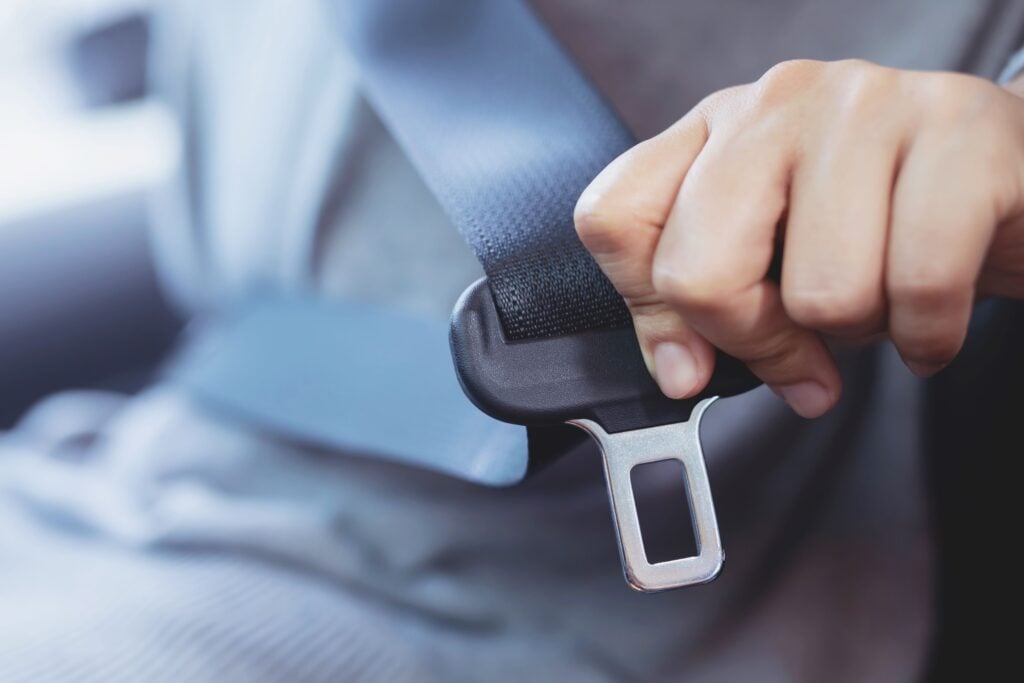
The Governors Highway Safety Association (GHSA) has designated November 14 as National Seat Belt Day. The organization uses the event to educate people about the importance of seat belt use. Proper seat belt use can make a huge difference in the event of a car accident. The National Highway Traffic Safety Administration (NHTSA) reported that 47% of passenger vehicle occupants killed in 2019 were unrestrained.
For National Seat Belt Day, the personal injury lawyers at ER Injury Attorneys would like to tell you about the history of seat belts and how they can help prevent catastrophic injuries or wrongful death in a car accident.
A Brief History of Seat Belts
The modern seat belt used in passenger cars today is based on the three-point safety-belt invented by Volvo in 1959. The design proved to be so effective that the Swedish carmaker allowed other companies to use its patented design for free. That altruistic movie would save thousands of lives over the next few decades.
Here are some facts about the history of seat belts in the United States:
- Car manufacturers were required to have seat belts in new cars in 1968
- New York was the first state to require primary seat belt use in 1984
- Primary seat belt use is required in 35 states, the District of Columbia, Guam, the Northern Mariana Islands, Puerto Rico, and the U.S. Virgin Islands
- Adult front seat passengers are required to wear seat belts in 15 states
- Not wearing a seat belt is a primary or secondary offense in 49 American states
- The “Live Free or Die” state of New Hampshire is the only state where adults (18 and over) do not have to wear seat belts
What Can I Do for National Seat Belt Day?
There are many things that you can do to spread awareness about the importance of seat belt use on National Seat Belt Day. Our Las Vegas and Henderson personal injury attorneys suggest:
- Inspecting your vehicle’s seat belts to make sure they function properly
- Always wearing your seat belt while driving or riding in a motor vehicle
- Making sure that your passengers are buckled up, as per Nevada law
- Refusing to drive until your passengers are wearing seat belts
- Knowing Nevada’s child seat laws and complying with them
Stressing the importance of seat belt use is particularly important for the young drivers in your household. Use stats like the NHTSA figure listed in the intro to emphasize that wearing a seat belt can literally make the difference between life and death. It’s a very simple thing that can make a huge difference in the life of anyone that drives or rides in a car.
Contact ER Injury Attorneys
ER Injury Attorneys hopes that you’ve learned a little bit more about the history of seat belts and how important these safety devices can be. Unfortunately, some car accident injuries happen no matter how safe you’re being. Should you or someone in your family get into a car accident then contact us for immediate assistance. Our team is available 24 hours a day, 7 days a week to help you find any medical attention you need and start your free consultation.
ER Injury Attorneys represents injury victims from throughout southern Nevada, including Clark and Nye County, all Las Vegas areas, Henderson, Summerlin, Boulder City, Laughlin, and Pahrump. Our team of experienced and compassionate injury lawyers is committed to doing everything possible to win you the highest settlement while treating you with the respect you deserve during a difficult time. Best of all, you don’t pay a cent unless money has been recovered on your behalf.
To get the money that you deserve for your injuries, call us today at 702-878-7878 or connect with us online through LiveChat or secure contact contact form.